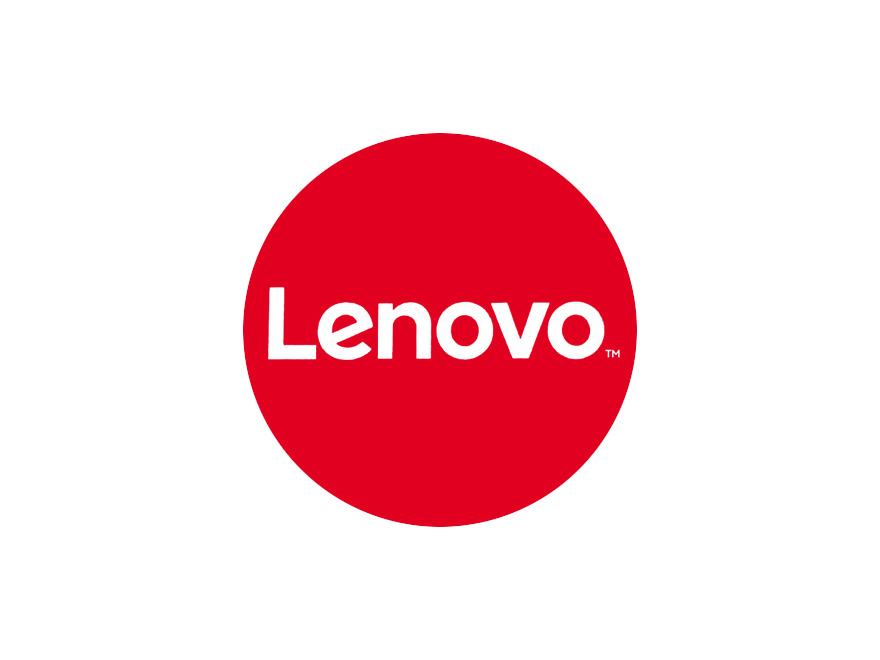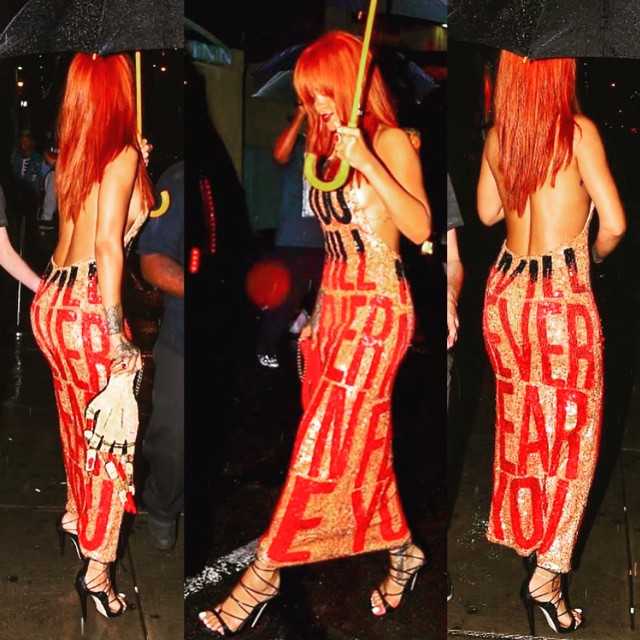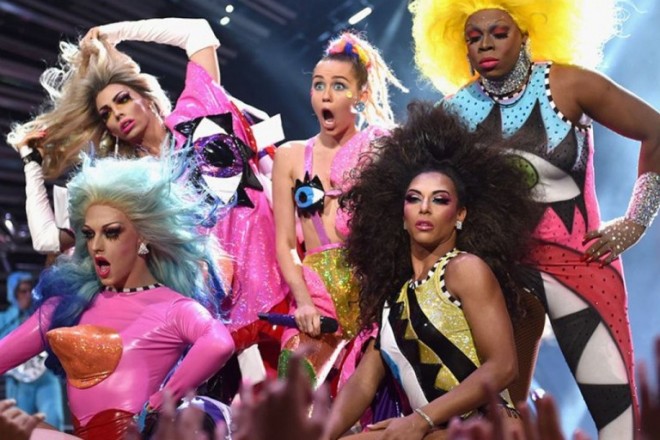It’s A DI$COUNT UNIVER$E: How These Melbourne Designers Made Australian Fashion World-Famous
Step one: sequins. Step two: internet. Step three: profit.


The Disruptors are bought to you by Lenovo Yoga Series.
We teamed up with Lenovo to pull together a list of 30(ish) Australians changing the game in their chosen field. Meet The Disruptors.
–
It’s kind of flip to say that the internet has changed the fashion industry, but design duo DI$COUNT (AKA Cami James and Nadia Napreychikov) are a case study for just how true this really is. The internet has altered the way we buy, wear, and think about fashion — and increasingly, how emerging designers are getting their start.
Unilateral, unique, and unconventional, DI$COUNT has used the internet as the modus operandi of its success: it functions simultaneously as a springboard, mood-board, e-shop, community base, and PR tool. For DI$COUNT and a new breed of designers, digital is far from an afterthought. The internet is the native home of the brand itself; one that focuses far more on its Instagram presence than its runway show.
In just six short years, DI$COUNT has grown exponentially. From a tiny blog, the label has gathered an impressive following, being repped by everyone from Missy Elliot to Madonna, as well as a cult of global DI$COUNT disciples, all served through their direct-to-consumer e-store and thriving social media presence.
But how did DI$COUNT make their mark in the small — and let’s face it, increasingly challenging — Australian fashion industry? DI$COUNT’s DIY success is a powerful mix of taste-making vision, and tapping into two defining features of the cultural zeitgeist: celebrity culture and above all, the potential of the internet.
The duo started out expressing all things DI$COUNT through their blog in December 2009 — a playground used to work out what the label was all about. As dissatisfied RMIT students in their final year of study, the pair found a natural home for their hard-to-categorise ideas, designs and mutual vision that didn’t quite belong anywhere else.
“The fashion education system (at least what we were exposed to), didn’t show us all the options — it was closed-minded and traditional and taught a specific way to be a designer, through forcing concepts and fitting in to certain systems,” the duo said of starting their blog. “Both of us found we had begun to create things that had no ‘typical contextualisation’ as outlined in the brief, and the fashion system that was being preached was something that as much as we tried, we couldn’t seem to relate to … We were increasingly under the realisation that our work and outcomes didn’t really fit within the traditional Australian fashion market.
“The current fashion system is outdated — now is the time to change it and recreate the framework.”
A few pairs of unicorn undies just completed and listed IN THE SHOP NOW! Thanks for you patience ??? they are $99 and available exclusively at www.discountuniverse.com A photo posted by DU (@discountuniverse) on
It’s a sweeping statement — and a defiant one. But it hit a nerve. The blog soon garnered a strong core readership, giving the fledgling designers a cheap and easy way to articulate, explore, and communicate their vision. Soon, they began to sell their one-off custom pieces to readers. With few traditional retail costs, the brand’s main business is conducted on its lean, nimble e-store, open 24/7 to customers around the world.
An unsurprising approach, perhaps, given that both James and Napreychikov wrote their university theses on the future of online communication. DI$COUNT was their theory in practice. “[This interest in the internet] probably has a lot to do with how limiting it can feel to be in the Australian market, not only feeling isolated on a geographical scale, but also having inverted seasons to the rest of the world,” the pair wrote.
“Through use of the internet, we gain access to rest of the world instantly, it closes the gap between trends in what are considered the ‘fashion meccas’ of the world and our own local trends. We’re increasingly moving towards larger scale global trends because information is so instantly passed through channels around the world. Through online retail, and the ability to buy from anywhere in the world, we’re now able to choose season/trend/culture/style — irrespective of location.”
Then came their biggest “official” fashion show: an offsite, off-schedule event at Mercedes-Benz Fashion Week in 2014. With international magazine editors, buyers and Aussie fashion industry in attendance, many declared it was the “show of the week”. This alternative approach was unsurprising from a brand that hadn’t used — or needed — the support of the local industry to reach an audience.

CCing Chris Brown: The DU dress Rihanna wore has “You Will Never Own Me” on the front and “I Will Never Fear You” on the back.
Rihanna, Britney Spears, Beyonce, M.I.A, Iggy Azealea, Rita Ora and Katy Perry — who had the duo design a custom outfit for her Prismatic world tour — have all been spotted in DI$COUNT, on- and off-stage. Smaller, one-off collaborations have seen the pair work with Hello Kitty and the Australian Ballet, among others.
But one of the label’s biggest breakthroughs came when photos of 21-year-old Miley Cyrus shot by controversial photographer Terry Richardson went viral, showing the star wearing DI$COUNT’s trippy tie-dye T-shirt emblazoned with the words PRAY FUR UR LYF. Bought by Cyrus’ stylist Simone Harouche from the e-store, the tee was the beginning of an ongoing relationship, which saw the performer use the design as part of her merchandise for her 2014 Bangerz world tour.
The relationship was very publicly wounded in September this year when Cyrus’ allegedly lifted DI$COUNT’s design style for her performance at the MTV VMA awards. The girls were, in their own words, heartbroken, “We’ve kept our mouths closed about a lot of things in the past, but the one thing you can’t take and get away with is someone’s identity. We know it might be risky for us career-wise to comment on this, but if we didn’t, it would mean that we stand for nothing.”
While DI$COUNT’s premium ‘Arti$anal’ range of custom-made showpieces (priced upwards of $400AUD) are frequently adapted to the stage, the main line diffuses the aesthetic in a more affordable and wearable way with punk-influenced street and sportswear. Starting at $10AUD and hitting a ceiling at around $300AUD, the range features socks, accessories, bodycon dresses, micro miniskirts, tees, bike shorts and crop tops all in an eye-popping carnival of sequins, Tumblr rave motifs, tie-dye, cats, cyclops eyes, surreal faces, and blood-dripping lips.
Across all pieces, creativity and decoration is key. The designers’ deftness with embellishment and logo design is perhaps best demonstrated via their sequinned ‘evil eye’, an emblem of sorts that has appeared stitched across dresses, tees, tops and bags. While their design references may tip their post-modern hat to the trippy club kids of Jeremy Scott and his ilk, they also pay tribute to the DNA of Aussie designers in other, more nuanced ways. Thinking of the larrikinism, imagination, humour, playfulness, colour, print and embellishment of the likes of Romance Was Born, Jenny Kee, and Mambo, among others, a continuous form of Aussie identity is perceptible.
“DI$COUNT is a brand, an idea, an image, a dialogue, a strategy, a transformation, a design, [a] blog, a motion picture, a label, a personality, a website, a quote, a garment, an emotion and an evolution,” reads the brand’s mission statement. And this 360, cross-disciplinary nature is present in everything they do. Whether on the runway, in the merch, custom designs, blog, Instagram or e-store, that makes DI$COUNT the unique voice that it is.
–
This is the last article in our Disruptors series. Check out the other 29 Australians we think changed the game in 2015, here.
